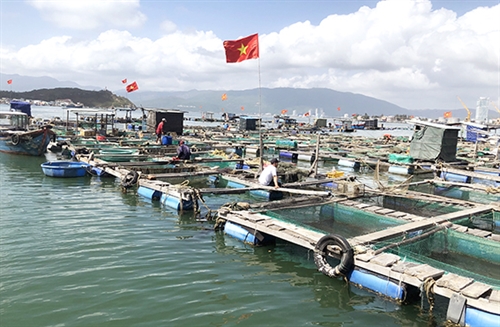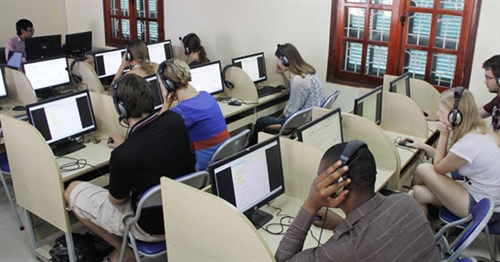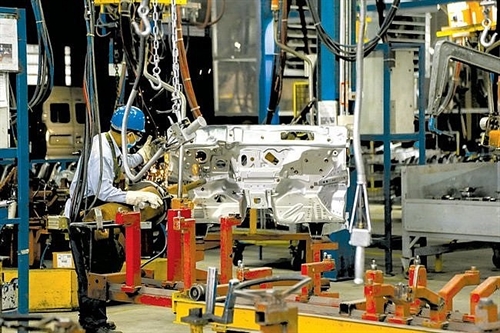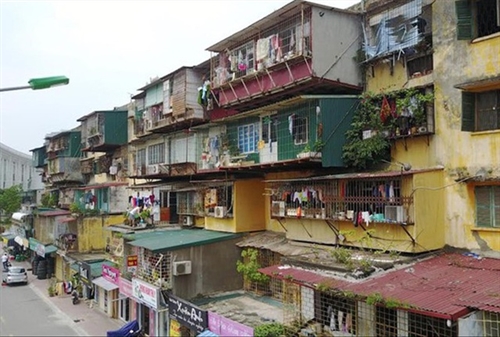By 2045, marine aquaculture will become a crucial part of the fisheries sector, contributing 25 percent of the total aquatic product output and earning more than USD 4 billion from exports.
Such is set forth under Prime Minister Decision 1664/QD-TTg dated October 4, approving the Scheme on marine aquaculture development through 2030, with a vision toward 2045.
 |
| Fish farming cages in Quy Nhon city, Binh Dinh province__Photo: Nguyen Linh/VNA |
The scheme is expected to help develop marine aquaculture into a large-scale, safe, efficient, sustainable and environment-friendly industry with branded products meeting demands of both domestic and foreign markets. As a result, the industry’s development will facilitate generation of more jobs and improvement of economic conditions of residents in coastal areas, thus contributing to firmly maintaining security and national defense on the country’s seas and islands.
Specifically, by 2025, the scheme targets having 280,000 ha of marine aquaculture waters and 10 million cubic meters of fish cages. The annual marine aquaculture output is expected to reach 850,000 tons while the marine aquaculture export value is expected to reach USD 0.8-1 billion and USD 1.8-2 billion by 2025 and 2030, respectively.
In order to achieve the above targets, it is necessary to develop complete infrastructure facilities serving marine aquaculture such as works for production of aquatic breeds, offshore marine farming areas, facilities for supporting industries, and automatic environmental monitoring systems.
As for inshore marine farming, the scheme prioritizes aquatic species with competitive advantages in the market such as saltwater fish, crustaceans, mollusk, seaweed, and ornamental aquatic creatures. At the same time, the model of industrial-scale fish farms will be formed to rear various aquatic species suitable to various ecological zones nationwide as well as their environmental carrying capacity.
As for offshore sea farming, aquatic species such as saltwater fish with high economic value and mollusk will be prioritized, while industrial-scale and modern fish farms will be developed with fish cages and rafts made of durable materials suitable to reared aquatic species and resistant to fierce weather conditions such as large waves, strong wind and sea storms.
Offshore marine farming areas will be established in such coastal localities as Quang Ninh, Hai Phong, Quang Ngai, Phu Yen, Khanh Hoa, Ninh Thuan, Binh Thuan, Ba Ria-Vung Tau, Ca Mau and Kien Giang and several others with favorable natural conditions.
Under the scheme, the Hai Phong-Quang Ninh area will be built into a sea aquaculture center with appropriate facilities for marine conservation and coastal tourism. It is also planned to develop mollusk breed production areas to meet the regional and national demands.
The coastal cities and provinces from Thanh Hoa to Binh Thuan will develop sea aquaculture in tandem with seafood processing, logistics and infrastructure for aquaculture development, focusing on saltwater fish, seaweed, sea cucumber and ornamental organisms, and effective and sustainable exploitation of various lobster breeds.
The coastal cities and provinces from Ba Ria-Vung Tau to Kien Giang will harmoniously combine sea farming with marine services and eco-tourism, petroleum, wind power and processing industries.- (VLLF)









